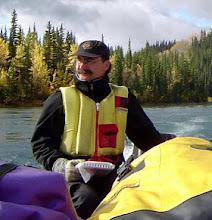The height of the South Island's farm year is Canterbury Show Day. Amongst all the fancy new farm equipment for sale we check out the sandbox scale equipment to see what catches Hector's eye.
Our friend's son has joined us for the fair. Jamie and I do the carny tour of the "Get rich quick" booths. In a half hour frenzy Jamie's cash is transformed into a bag full of colourful prizes unique to the trade. And onto the rides.
The Ferris wheel gives us an overview of the fairground so we can plan our future adventures. The biplanes are only interesting from above. In the distance we see two huge inflated sinking Titanics, I wonder what they are for. Jamie has his eyes on another ride.
The bulk of the fair centres on the farm, all sorts of equipment is there for close inspection. There are acres of holding pens where judges scrutinize the best goat, the wooliest trio of lambs and the biggest pig. Beyond are grassy paddocks for the demonstration of equestrian expertise. We head for the centre for the sheep shearing competition.
Sheep shearing is a highly competitive trade, shearers especially proud of their agility (not easy to turn a sheep and clip it at the same time), their speed and the quality of their cut. Judges scrutinize each competitor, taking marks off if the the sheep's skin is nicked and ensuring no wool is left unshorn.
We are watching the manual clippers class. This is the classic shearing style and is an interesting example of where a trade values the intangible heritage of their work. These shearers are honoured not only for their shearing skills, but also for their abilities with the less used traditional equipment.
The cut fleece is laid clean side down by the roustabouts who clean out loose trash. Then it is passed on to the wool grader for evaluation. Two minutes for shearing, two minutes for processing and the fleece is ready for the market.
Afterwards we take in one more ride - the King Kong versus T-Rex slide. Mobbed with kids this was Jamie's highlight. After about 15 minutes racing up and down a gently swaying inflatable he was ready to head home.
On the way out we browsed the historic tractor paddock. A week later in rural Canterbury we met a vintage tractor road rally. Some dozen ancient tractors puffing and wheezed their way along the secondary highway, each one topped by a beaming older gentleman. It is remarkable how much nostalgia is associated with agriculture. I suppose it is a reach back to our western civilization's roots in farming.


.jpg)



.jpg)
.jpg)
.jpg)
.jpg)
.jpg)
.jpg)
.jpg)
.jpg)
.jpg)

.jpg)
.jpg)
.jpg)
.jpg)
.jpg)
.JPG)
.jpg)
.JPG)
.JPG)
.JPG)
.jpg)
.jpg)
.JPG)
.JPG)
.JPG)
.JPG)
.JPG)
.jpg)
.jpg)

.jpg)
.jpg)
.jpg)
.jpg)
.jpg)
.jpg)
.jpg)
.jpg)
.jpg)
.jpg)
.jpg)
.jpg)
.jpg)
.jpg)
.jpg)
.jpg)
.jpg)
.jpg)
.jpg)
.jpg)
.jpg)
.jpg)